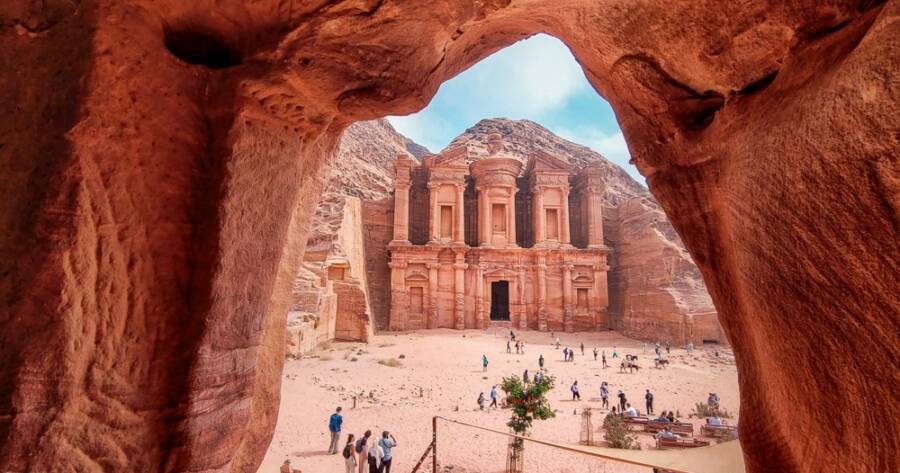For travelers with a passion for history, the world is full of remarkable sites that tell stories of ancient civilizations, iconic battles, and architectural feats. From the towering structures of the Inca Empire to the majestic wonders of Asia, these historical landmarks offer a unique glimpse into the past. Whether you’re wandering through the ruins of Rome or exploring the temples of Petra, each destination holds a fascinating story waiting to be discovered.
Machu Picchu: The Lost City of the Incas
Machu Picchu, located high in the Peruvian Andes, is one of the most iconic historical sites in the world. Built in the 15th century by the Inca Empire, this ancient citadel was abandoned by the Incas in the 16th century and remained hidden from the outside world until its rediscovery in 1911. Today, Machu Picchu is a UNESCO World Heritage Site and one of the New Seven Wonders of the World.
Visitors can explore the intricately designed stone structures, terraces, and temples while taking in breathtaking views of the surrounding mountains. The site’s mysterious aura, combined with its architectural marvels, makes it a must-visit for any history buff. Hiking the Inca Trail to Machu Picchu also offers an immersive experience into the rich cultural history of the Inca civilization.
Petra: The Rose-Red City of Jordan
Hidden among the sandstone cliffs of Jordan, Petra is one of the most remarkable archaeological sites in the world. Established as early as the 6th century BC by the Nabateans, Petra served as a thriving trading hub between the Arabian Peninsula, Egypt, and the Mediterranean. The city is famed for its stunning rock-cut architecture, including the famous Treasury, which is carved directly into the cliffs.
Petra’s history comes to life as visitors walk through the narrow Siq, a canyon that leads to the heart of the city, and explore its tombs, temples, and ancient water channels. The site’s historical significance as a trading center and its breathtaking beauty make it an essential destination for history enthusiasts seeking a glimpse into the past.
Stonehenge: A Monument of Mystery
Stonehenge, located in the English countryside, is one of the world’s most famous prehistoric monuments. Built around 2500 BC, this ancient stone circle continues to baffle historians and archaeologists with its purpose and construction. Some theories suggest it was a site for religious ceremonies, while others believe it served as an astronomical observatory or burial ground.
Visitors to Stonehenge can marvel at the enormous stones arranged in a circular pattern, with some weighing as much as 25 tons. The site’s mysterious nature and its connections to ancient rituals make it a fascinating stop for anyone interested in prehistoric history. Surrounding the monument, the landscape also offers other intriguing archaeological sites, adding to its allure.
The Colosseum and Roman Forum: The Heart of Ancient Rome
The Colosseum, located in the heart of Rome, is a symbol of the grandeur and brutality of the ancient Roman Empire. This iconic amphitheater, completed in 80 AD, could hold up to 80,000 spectators who came to watch gladiatorial combat, animal hunts, and other public spectacles. Today, the Colosseum stands as a powerful reminder of Rome’s imperial might and its fascinating history.
Adjacent to the Colosseum, the Roman Forum was the center of public life in ancient Rome. Once home to temples, government buildings, and markets, the Forum offers an unparalleled glimpse into the daily life of ancient Romans. A visit to both sites allows travelers to immerse themselves in the history of one of the most powerful empires in history.
The Great Wall of China: A Monument to China’s Strength
Stretching over 13,000 miles, the Great Wall of China is one of the world’s most impressive feats of engineering and a testament to China’s strength and determination. Built over several centuries, the wall was constructed to protect the northern borders of the Chinese Empire from invasions. Today, sections of the wall remain intact, allowing visitors to walk along its ancient stones and take in panoramic views of the surrounding landscape.
The Great Wall offers an extraordinary blend of history, culture, and natural beauty. As travelers explore its watchtowers and fortifications, they gain insight into China’s historical defense strategies and the lengths to which its rulers went to protect their empire. A visit to the Great Wall is essential for history buffs seeking to understand China’s ancient military prowess.
Taj Mahal: The Symbol of Eternal Love
Located in Agra, India, the Taj Mahal is one of the most beautiful and enduring symbols of love in the world. Built by Emperor Shah Jahan in memory of his beloved wife Mumtaz Mahal, the Taj Mahal is an architectural masterpiece made of white marble, featuring intricate carvings, gardens, and reflecting pools. Completed in 1653, the Taj Mahal is also a UNESCO World Heritage Site and one of the Seven Wonders of the World.
Beyond its breathtaking beauty, the Taj Mahal has deep cultural and historical significance, symbolizing the grandeur of the Mughal Empire and the enduring love between the emperor and his wife. Visiting this iconic landmark allows travelers to experience not only its beauty but also the rich history behind its construction.
A Journey Through Time: Uncovering the Past
For history buffs, these must-visit sites provide a unique opportunity to step back in time and immerse yourself in the cultures, stories, and achievements of ancient civilizations. From the stunning Inca ruins of Machu Picchu to the awe-inspiring Taj Mahal, each destination offers its own narrative, waiting to be explored. Whether you’re walking through the streets of Petra or gazing at the Great Wall, these historical landmarks remind us of the incredible human achievements that have shaped the world we live in today.

